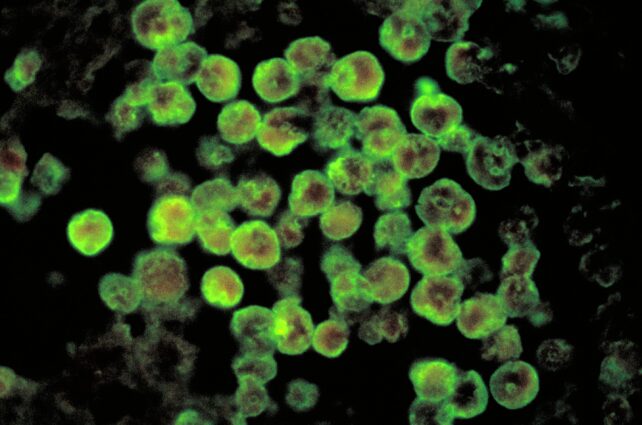A woman in Texas has died from a rare brain infection after flushing her nose with water stored in the tank of a recreational vehicle.
Lab tests on the 71-year-old woman's cerebrospinal fluid confirmed she was infected with Naegleria fowleri, a tiny, free-swimming protozoan also dubbed 'the brain-eating amoeba,' which causes the highly lethal disease primary amoebic meningoencephalitis (PAM).
This killer bug hangs out in warm bodies of fresh water like ponds, lakes, and even neglected swimming pools. Most infections occur while swimming or engaging in water sports in these places.
"The patient had no recreational exposure to fresh water; however, she had reportedly performed nasal irrigation on several occasions using non-boiled water from the RV potable water faucet during the four days before illness onset," a CDC case report details.
"Despite medical treatment for a suspected PAM infection, the patient developed seizures and subsequently died eight days after symptom onset."
Authorities were unable to detect the amoeba in samples from the RV tank or the campground water supply, which may be because they took samples 23 days after the possible exposure took place.
But testing did indicate the water had inadequate levels of disinfectant to prevent microbes from building biofilm communities that can protect pathogens like N. fowleri. The water was more cloudy than what is recommended for drinking water, another sign that disinfectant levels may have been inadequate.
This is why you really shouldn't flush tap (or RV tank) water up your nose for nasal irrigation: the CDC recommends only distilled or sterilized water be used.
Because while N. fowleri likes things lukewarm, it really loves hotter liquids: the kinds sloshing around inside our bodies, for instance.
When it enters a human body, N. fowleri passes a temperature threshold – about 25 degrees Celsius or 77 degrees Fahrenheit – that transforms the bug from its flagellate state into an insatiable trophozoite, a form in which the microbe is actively feeding and reproducing.
Any other entryway to the body, and N. fowleri will be politely escorted out by our immune system or burned up by stomach acids. But via the nose, it has an alarmingly straightforward route to the brain.
This ravenous pathogen chews through the membrane we use to smell with, the olfactory epithelium, and follows the nerve fibers that carry scent signals back to our brains, nibbling at astrocytes and neurons along the way until it reaches its cerebral target.

Most people infected with N. fowleri die within 1 to 18 days after symptoms start. Warning signs include headache, fever, nausea, and vomiting, which can progress to a stiff neck, confusion, loss of balance, and hallucinations.
While this disease is very rare, the prognosis is dire: of the 164 cases reported in the US between 1962 and 2023, only 4 people have survived.
"This case reinforces the potential for serious health risks associated with improper use of nasal irrigation devices, as well as the importance of maintaining RV water quality and ensuring that municipal water systems adhere to regulatory standards," the report states.
The full CDC report is available here.